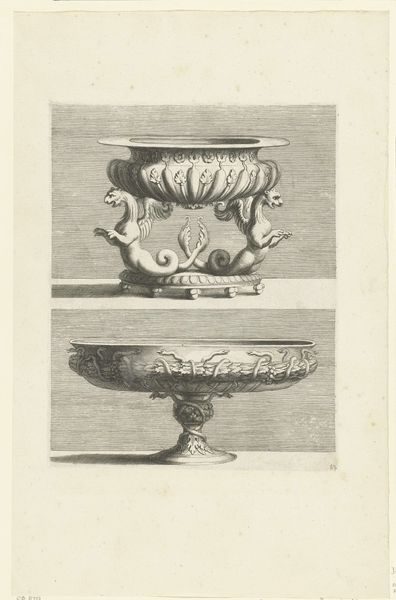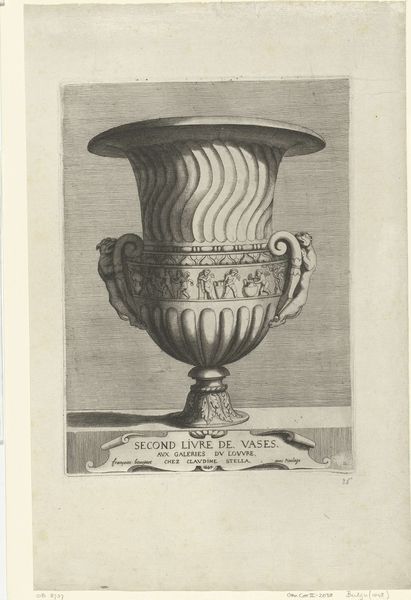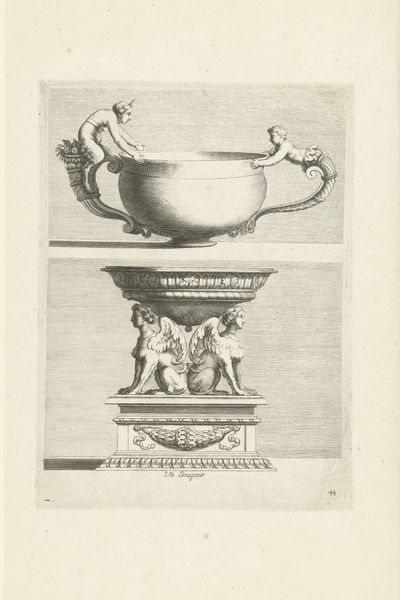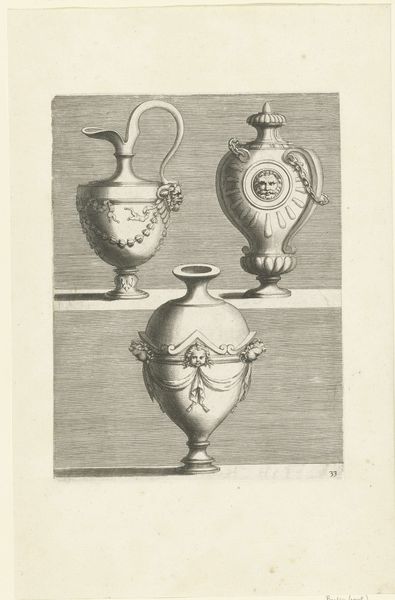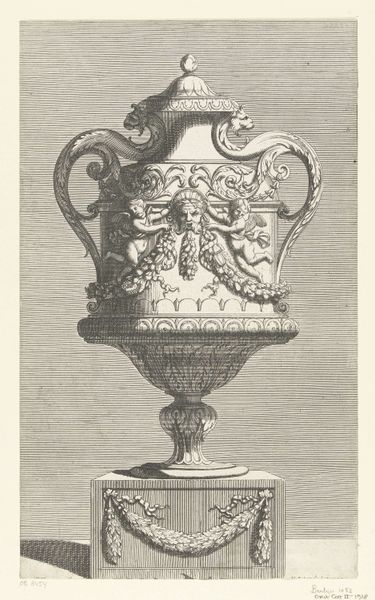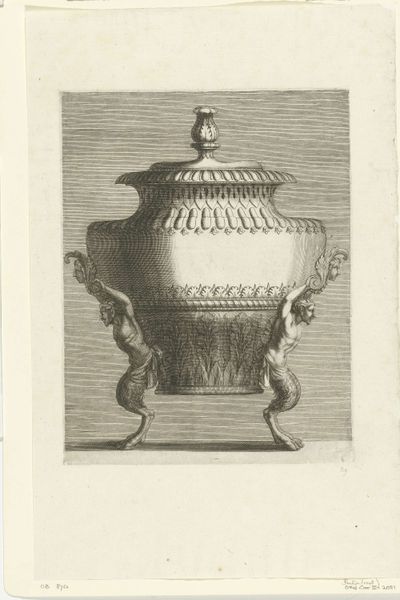
print, metal, engraving
#
baroque
# print
#
metal
#
form
#
line
#
decorative-art
#
engraving
Dimensions: height 268 mm, width 203 mm
Copyright: Rijks Museum: Open Domain
Editor: This engraving from 1667, titled "Drie Schalen" or "Three Bowls", by Françoise Bouzonnet, is really striking. I find the stark contrast and meticulous linework quite captivating. How do you interpret this work? Curator: I see this piece as a study in form and line. Notice how Bouzonnet uses hatching and cross-hatching to create volume and depth, giving the impression of light reflecting off the metal surfaces. The linear quality, inherent in the engraving technique, reinforces the outlines of each bowl, emphasizing their distinct shapes and textures. Observe the modulation from the flat planes that surround the shapes to the curving forms and shadows of the objects themselves. Editor: So, it’s less about what the bowls *represent* and more about how they're depicted? Curator: Precisely. It's the interplay of light and shadow, the modulation of line weight, and the careful rendering of form that define this engraving. Consider the baroque style here, but abstracted; the embellishments serve merely to accentuate the geometry and shape. Note how the texture around the top rim on the top bowl interacts with the rest of its body. It is purely decorative and doesn't take away from the bowl's function or purpose, but it does work to add contrast in its textural depiction. Editor: I see. I was initially drawn to the imagery, but now I appreciate the skill in rendering these forms and the formal techniques at play. Curator: Exactly. By shifting our focus to the formal elements, we can appreciate the artistry in its purest form. Editor: This has opened my eyes to a completely different aspect of the piece. Thanks!
Comments
No comments
Be the first to comment and join the conversation on the ultimate creative platform.
